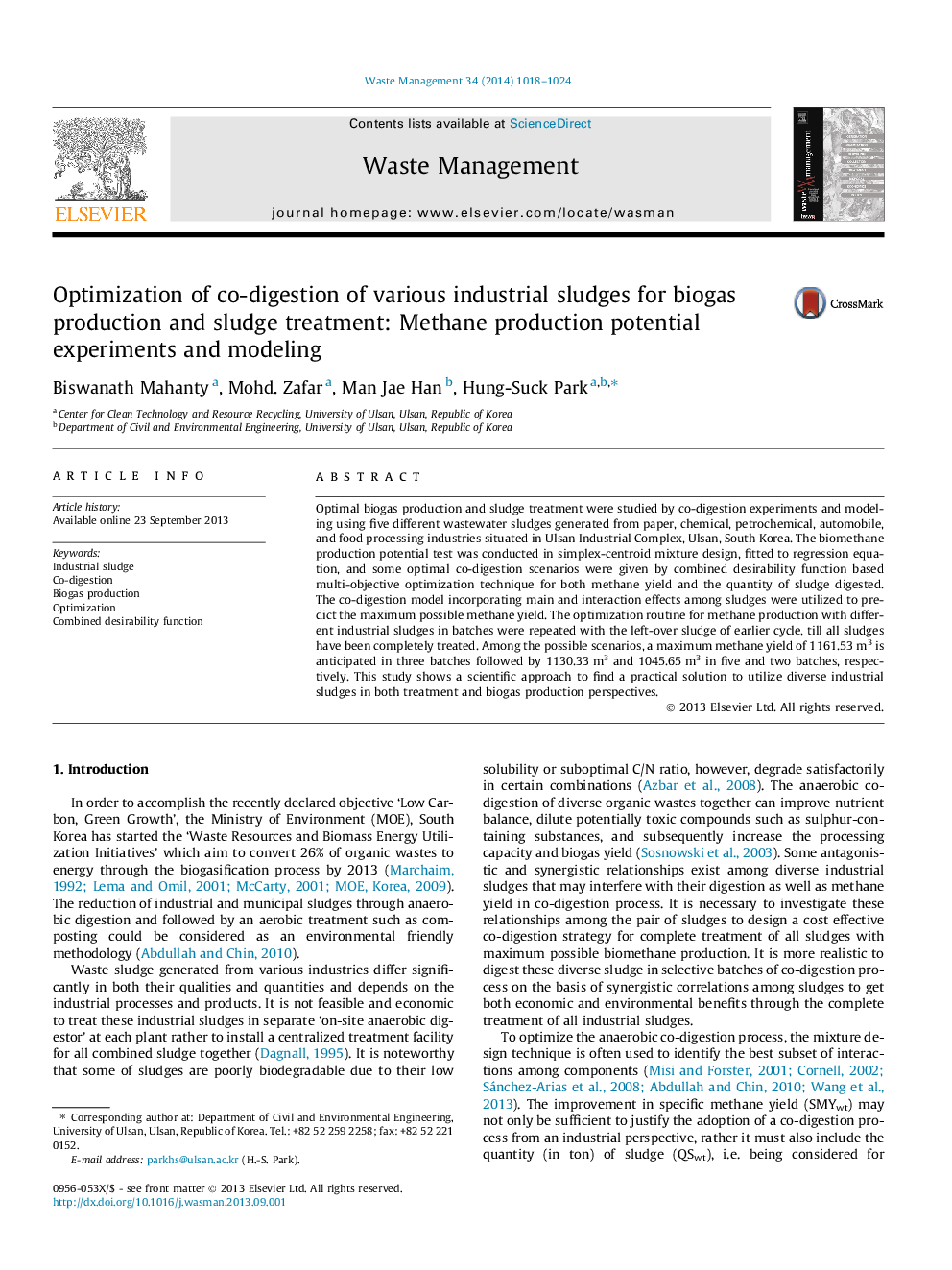| Article ID | Journal | Published Year | Pages | File Type |
|---|---|---|---|---|
| 4471623 | Waste Management | 2014 | 7 Pages |
•Optimize co-digestion by combine desirability of CH4 yield and sludge treatment.•Enhanced sludge digestion by partition of antagonistic and synergistic interactions.•12.41% Improvement in CH4 yield in three successive batches of co-digestion.
Optimal biogas production and sludge treatment were studied by co-digestion experiments and modeling using five different wastewater sludges generated from paper, chemical, petrochemical, automobile, and food processing industries situated in Ulsan Industrial Complex, Ulsan, South Korea. The biomethane production potential test was conducted in simplex-centroid mixture design, fitted to regression equation, and some optimal co-digestion scenarios were given by combined desirability function based multi-objective optimization technique for both methane yield and the quantity of sludge digested. The co-digestion model incorporating main and interaction effects among sludges were utilized to predict the maximum possible methane yield. The optimization routine for methane production with different industrial sludges in batches were repeated with the left-over sludge of earlier cycle, till all sludges have been completely treated. Among the possible scenarios, a maximum methane yield of 1161.53 m3 is anticipated in three batches followed by 1130.33 m3 and 1045.65 m3 in five and two batches, respectively. This study shows a scientific approach to find a practical solution to utilize diverse industrial sludges in both treatment and biogas production perspectives.
